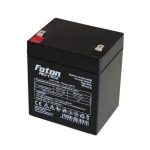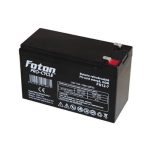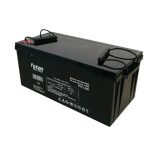Currently, lead-acid batteries occupy first place in both the automotive and energy storage and continuity markets due to the fact that the initial cost of lead-acid batteries is still lower than batteries with other chemistries. Unfortunately, due to their lower energy density, heavier weight, shorter lifespan, and longer charging time, lead-acid batteries are used where a low investment cost is required. Even though the chemistry is the same, lead-acid batteries are built differently to give them the requirements imposed by the application in which they must function.
Lead-acid batteries are composed of a lead dioxide cathode, a lead anode, and a sulfuric acid electrolyte (approx. 37%). The voltage of the lead-acid cell is 2.1 volts. During discharge, lead dioxide (positive plate) and lead (negative plate) react with the electrolyte (sulfuric acid) to create lead sulfate, water, and energy. When charged with an external power source, lead sulfate and water are electrochemically converted into lead, lead oxide, and sulfuric acid. At the end of charging, if overcharging occurs, the phenomenon of water electrolysis occurs with the release of oxygen and hydrogen, creating a potentially explosive atmosphere. This phenomenon, called “off-gassing”, also causes a loss of water that must be replenished periodically. To eliminate water consumption, constructive solutions were found to recombine gases and transform them into water that returns to the battery.
Lead-acid batteries are stored in a charged state and at temperatures above freezing. When kept in a discharged state, the battery sulfates and develops large crystals of lead sulfate that can cause irreversible damage to the plates. Desulfation is a long process and does not guarantee full recovery of the initial capacity. This is a slow process that is done with higher voltages than those at which normal charging is done and with low currents. Lead acid batteries can operate down to temperatures of -45°C, of course not at the capacity defined at 20°C (capacity decreases by approximately 1% for each degree below +20°C).
Depending on the construction of the plates, lead-acid batteries can be used in various applications.
| Auto(SLI) | Backup / UPS | Traction / Solar | Auto Deep Cycle |
Max. discharge currents Discharge times | 5xC (Ah) seconds | 3xC (Ah) Usually 15 min | C/5 (Ah) Usually 5-10 hours | 5xC (Ah) seconds |
Recommended charging currents Charging times | C/10 12 hours | C/3 3.5 hours | C/10 12 hours | C/10 12 hours |
Min no. of charge-discharge cycles 80% of C (Ah) | – | 200 | 1200 | 1500 |





